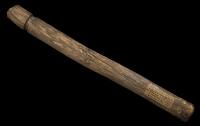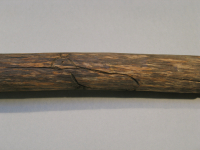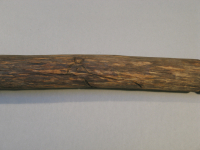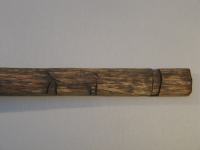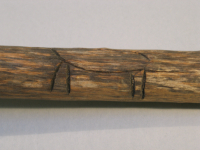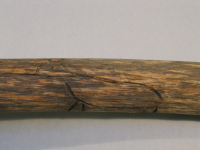grave marker
grave marker
grave marker
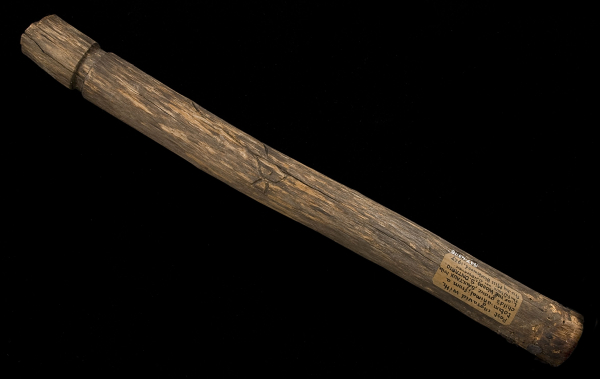
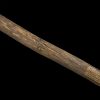
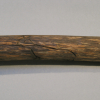
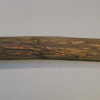
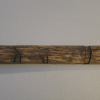
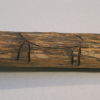
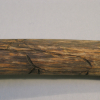
A small wooden post engraved with totem animal, made to be set up over a child's grave. Of Anishinaabeg origin, likely from the Saulteaux tribe. Donated to the Pitt Rivers Museum in 1927 by the collector, Beatrice Blackwood.
The Pitt Rivers Accession book entry states this grave marker is from the Saulteaux, or Lake of the Woods region. HB says it looks Western Anishinaabe.
Pitt Rivers Object catalogue and observations made by the GRASAC research team.
Read More About This Relative
soft wood; wooden base
Carved from a piece of soft wood. A 1cm wide carved band is found 4cm down from the marker's top. There is an animal engraved on the marker. The stick has been de-barked but not smoothed or sanded.
The wooden base was most likely added after the marker was collected.
An animal motif.
The Pitt Rivers Museum Object Catalogue states the animal motif is supposedly the totem of a child. It is portrayed sideways rather than upside down, as is usually found on grave markers.
AC has never seen a marker with the sort of carved band or ring found on this one.
The quality of the carving and minimal amount of adornment suggest this marker was for a child's grave.
Usually posts are flat rather than round (AC). Might the elaboration of the motif depend on the status of the person whose grave the post marked?
For comparisons with other markers see samples in Frances Denmore, Chippewa Customs, Bureau of Ethnology Bulletin 86 (1929) Plate 29, pg.76. Also check Schoolcraft (1848, 1853) for comparison.
Made by 1927. It may have been made in the nineteenth century, although, stylistically, it resembles items made in the twentieth century (HB).
Blackwood was in Kenora--Winnipeg--Norway House, Oxford House, areas in July 1925. (LP)
Provenance
This grave marker was donated to the Pitt Rivers Museum by Beatrice Blackwood in October 1927.
Frances Denmore, Chippewa Customs, Bureau of Ethnology Bulletin 86 (1929) Plate 29, pg.76.
About This GRASAC Record
This record was created as part of a Great Lakes Research Alliance for the Study of Aboriginal Arts and Cultures (GRASAC) research trip to the Pitt Rivers Museum and British Museum, December 8-22 2007, funded by a grant from the International Opportunities fund of the Social Sciences and Humanities Research Council (SSHRC).
researchers present: Heidi Bohaker (HB), Al Corbiere (AC), Stacey Loyer (SL), Janis Monture (JM), Laura Peers (LP), Ruth Phillips (RP), Anne De Stecher (AS), Cory Willmott (CW).
49.767, -94.4851
See below.
 Knowledge Sharing Platform
Knowledge Sharing Platform

